The best binoculars 2025: for wildlife watching, crag appraisal and more
We've tested and rated the best binoculars and to bring focus to your outdoor adventures whether you're a birder, climbing enthusiast or stargazer
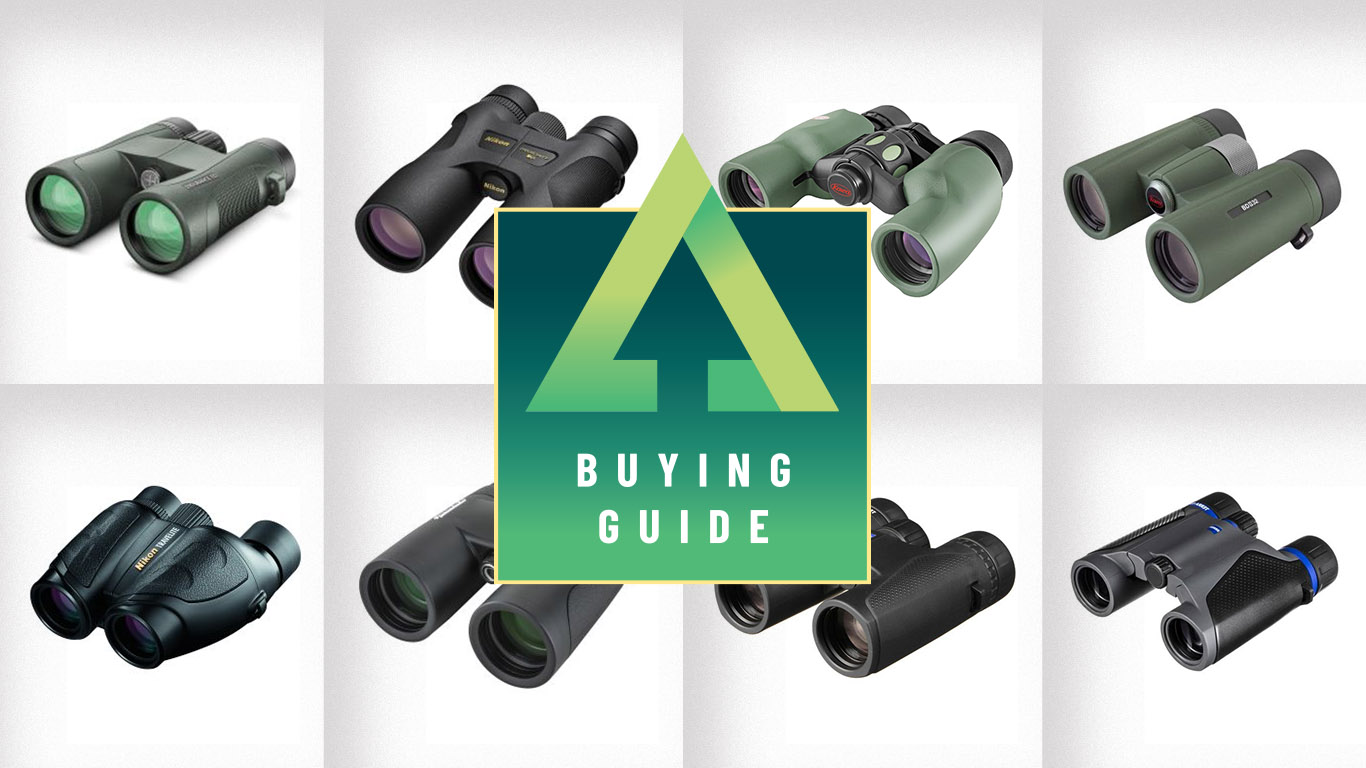
Having a pair of the best binoculars will elevate your outdoor adventures. This is true whether your primary objective is wildlife watching or if you're bringing a lightweight pair along just in case you spot something interesting during your hike.
The best binoculars magnify and bring razor sharp focus to distant objects, allowing you to admire soaring eagles, appraise crags for potential lines of weakness or check on the progress of the advance party as they break trail – among other things. Some are hefty and provide impressive magnification, while others are pocket-sized and ideal for stashing in your daypack during a casual walk.
In this guide, our expert reviewers round up the best options for outdoor adventures, wildlife watching and stargazing, as well as the pair we think are best suited to kids. Our favorite of all is the Hawke Endurance 8x42 for its crisp image and natural colors. If you don't know your objective diameters from your porro prisms, see our how to choose guide at the bottom of this feature.
The quick list
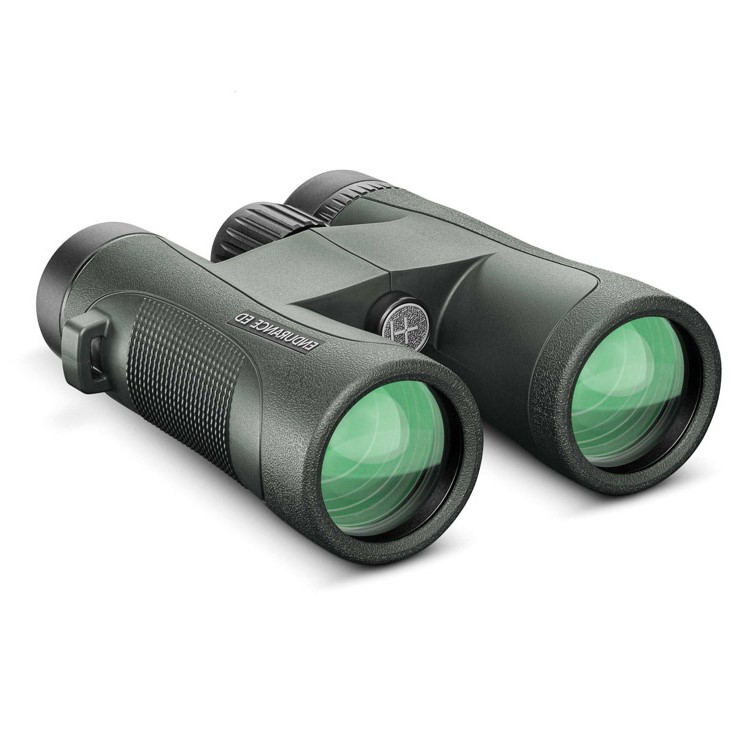
A joy to use thanks to the crisp image and natural colors they produce. Great if you aspire to serious wildlife watching.
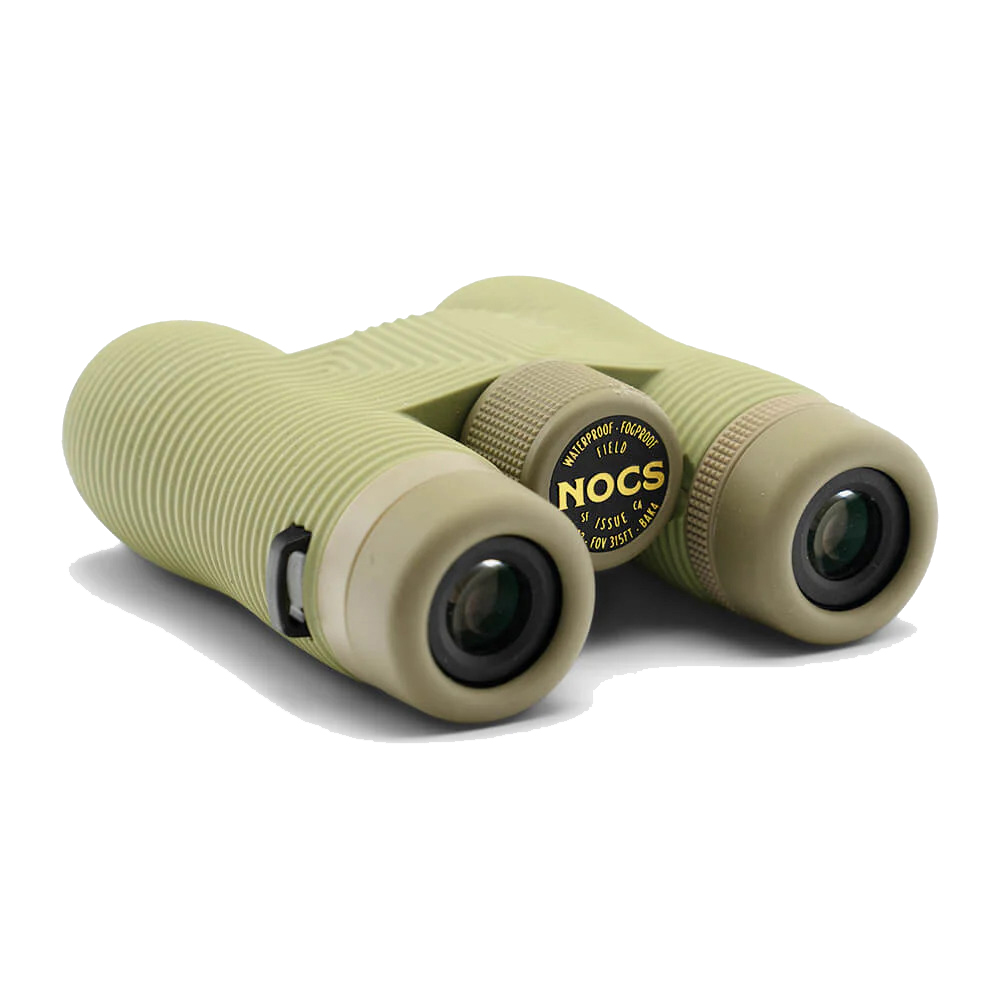
Lightweight, and boasting waterproofing that means you can get up close to your subjects in all weathers, this is a pair of bins you can happily chuck in your backpack without feeling weighed down
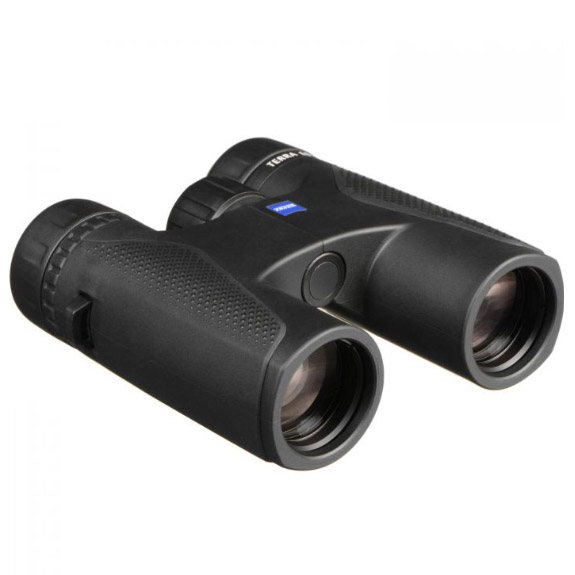
Lack of distortion at the edges makes these ideal for tracking birds as they zip across the sky, though they may be overkill for novices.
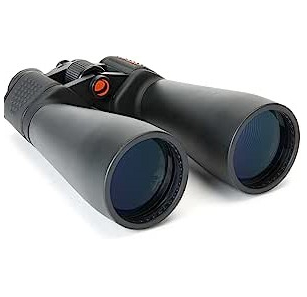
Get impressive views of the lunar surface, Jupiter, cloud nebulae, and even a hint of the rings of Saturn.
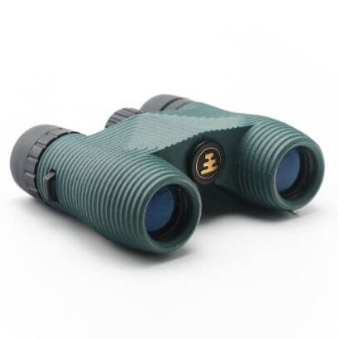
A pair of adventure-ready, high-performing binoculars that won't break the bank. Waterproof, with outstanding image quality.
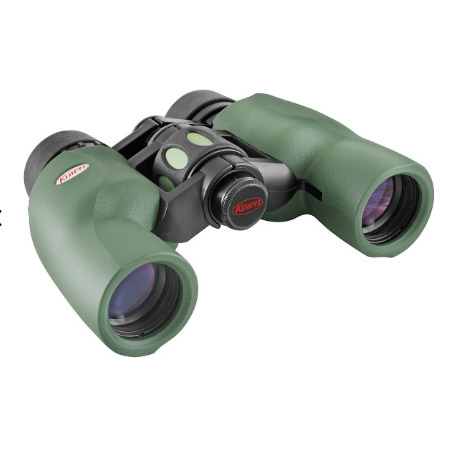
With a bright, sharp image, a shape that works for smaller hands, and a light build, these are a great first pair of binoculars that can be tucked easily into a waterproof jacket pocket.
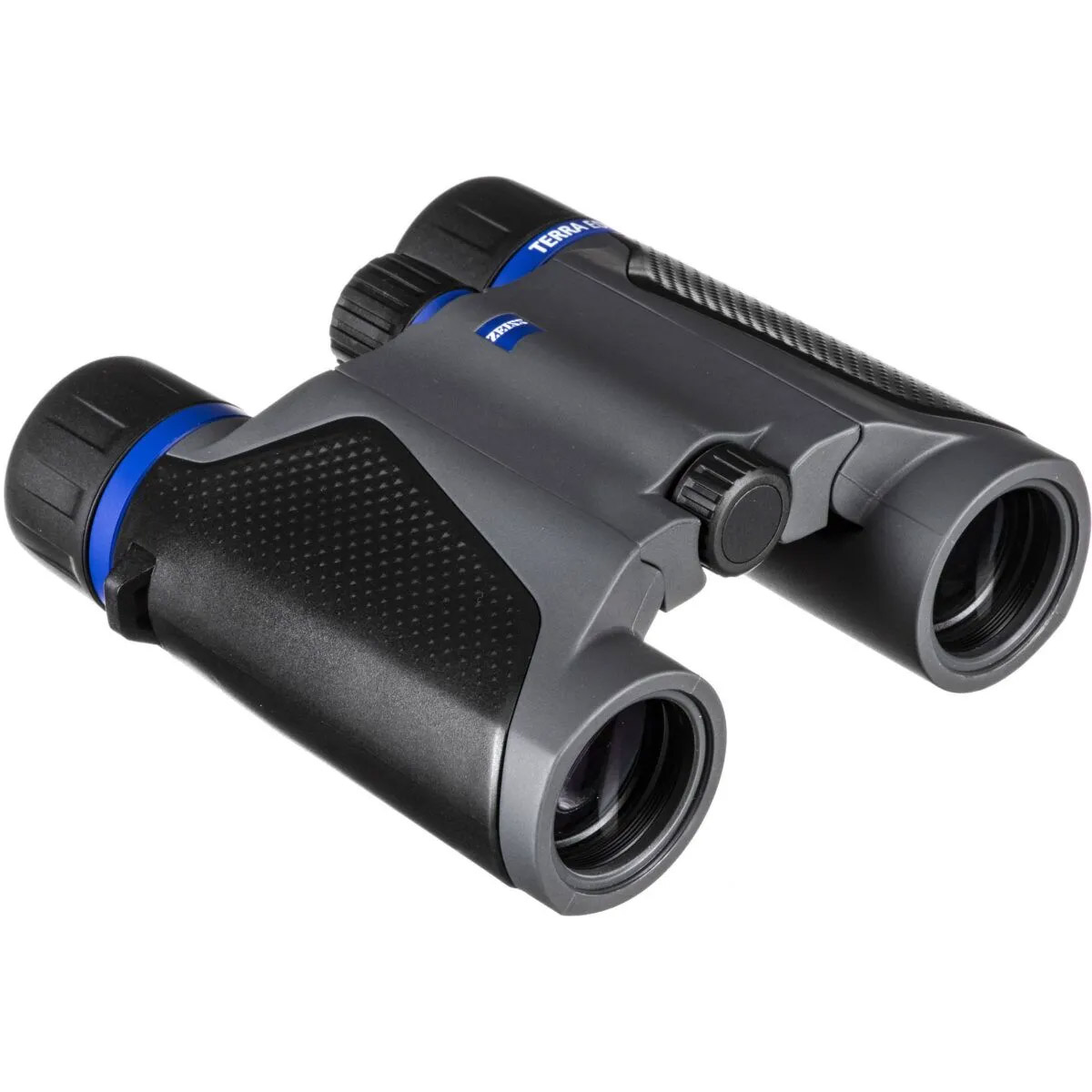
Large viewing fields and close minimum focus distance make these the closest thing you’ll get to full-sized binoculars in a pocket-friendly format.
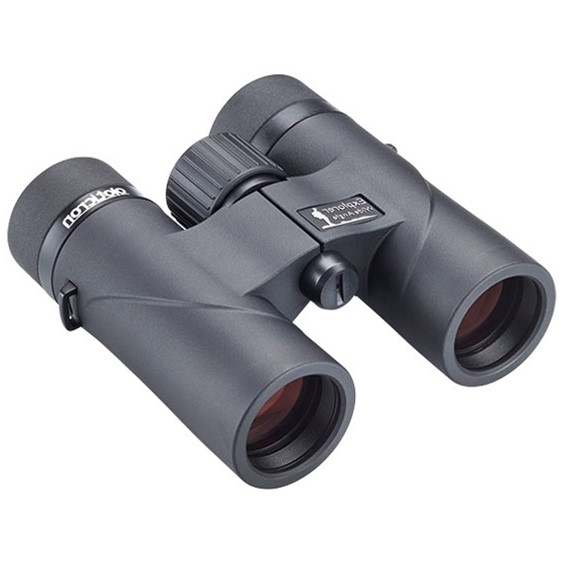
Super light, compact and easy to justify throwing in a backpack or bike pannier just in case. These were the pair we kept coming back to during the test.
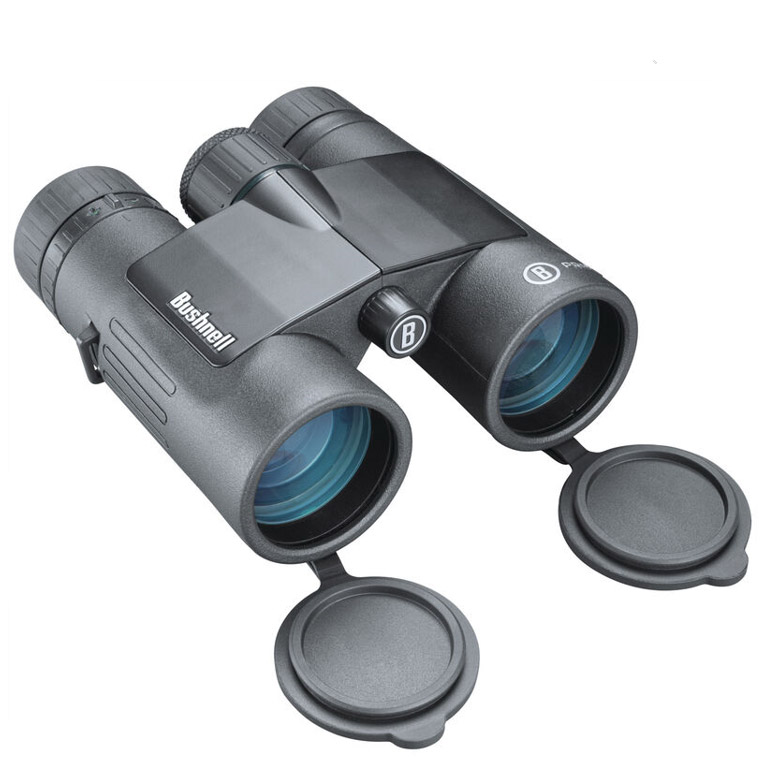
Excellent all-rounders with a particularly robust build and hydrophobic coating to shrug off grime in the field.
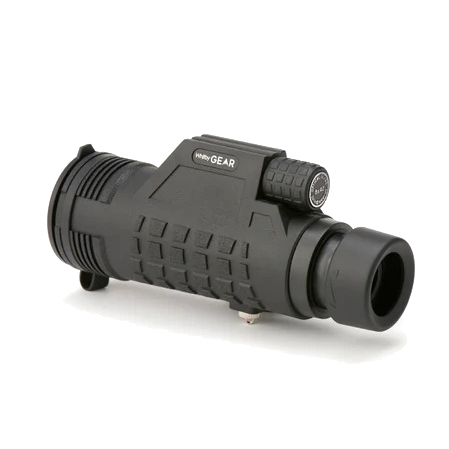
An easy, more portable alternative to a pair of binoculars, the Whitby Gear Monocular is perfect for watching wildlife on the go, and has a durable finish in a compact design
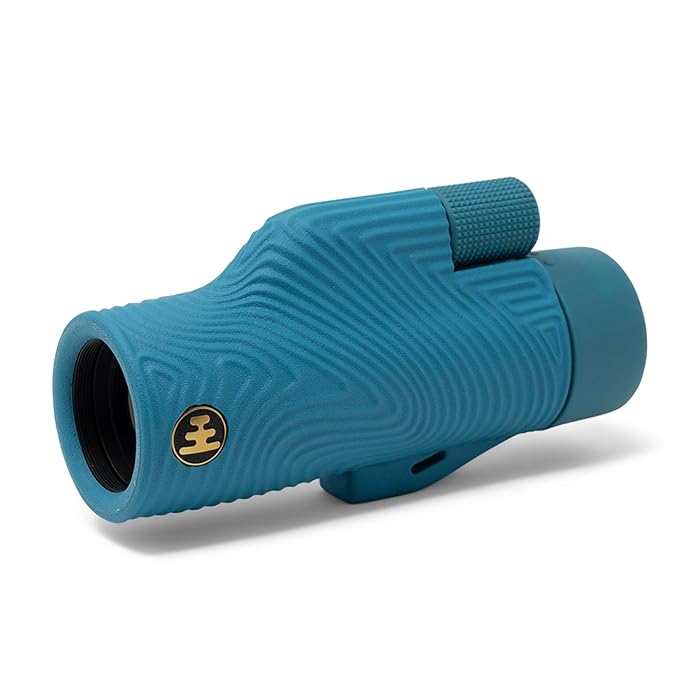
Portable and lightweight, we love this neat bit of kit for its quality optics, grippy exterior and waterproof qualities – all great for when you are on the move
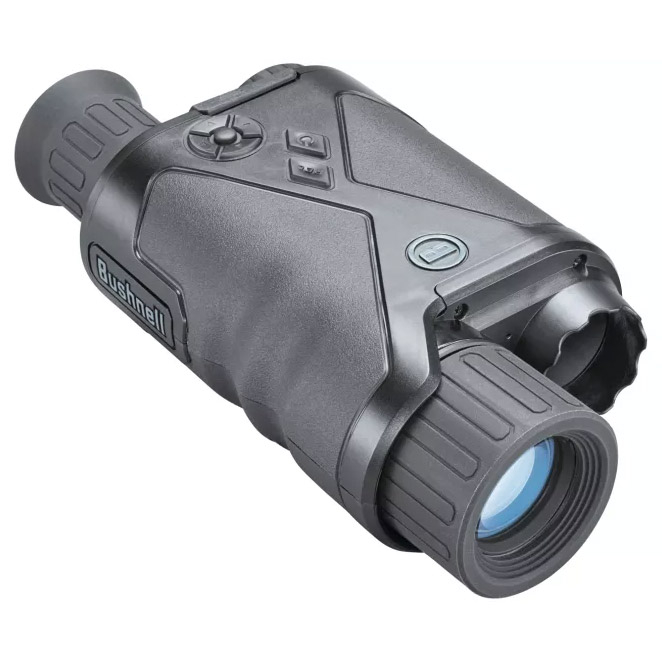
A monocular with a built-in night vision camera. A fun option that could have serious applications for those with an interest in nocturnal wildlife.
The best binoculars comparison table
Model | List price | Weight | Magnification | Style |
Hawke Endurance 8x42 | $329 (US) / £289 (UK) | 1lb 9oz / 705g | 8 | Premium binoculars |
Nocs Provisions Field Issue Waterproof 10x32 | $179.95 (US) / £177 (UK) | 1lb 1oz / 473g | 10 | Mid-range binoculars |
Zeiss Terra ED 8x32 | $449.99 (US) / £400 (UK) | 1lb 2oz / 510g | 8 | Standard binoculars |
Celestron SkyMaster 15x70 | $129.95 (US) / 119.99 (UK) | 3lb / 1.36kg | 15 | Stargazing binoculars |
Nocs Standard Issue Collection Binoculars | $99.95 (US) / £97 (UK) | 12oz / 335g | 8 | Good value binoculars |
Kowa YF 8x30 | $149 (US) | 1lb 1oz / 470g | 6 | Entry-level binoculars |
Zeiss Terra ED Pocket | $349.99 (US) / £309 (UK) | 11oz / 310g | 8 | Premium binoculars |
Opticron Explorer WA ED-R + 8x32 | $209 (US) / £239 (UK) | 15.5oz / 440g | 8 | Premium, lightweight binoculars |
Bushnell Prime 8x42 | $139.99 (US) / £149.99 (UK) | 1lb 7oz / 660g | 8 | Premium binoculars |
Whitby Gear 8x42 Monocular | £49.95 (UK) | 12.4oz / 352g | 8 | Monocular |
Nocs Provisions Field Tube 8x32 | $125 (US) / £124 (UK) | 8.4oz / 239g | 8 | Lightweight monocular |
Bushnell Equinox Z2 3x30 | $349.95 (US) / £332 (UK) | 14.8oz / 420g | 3 | Monocular video camera |
The best binoculars we recommend in 2025
You can trust Advnture
The best binoculars overall
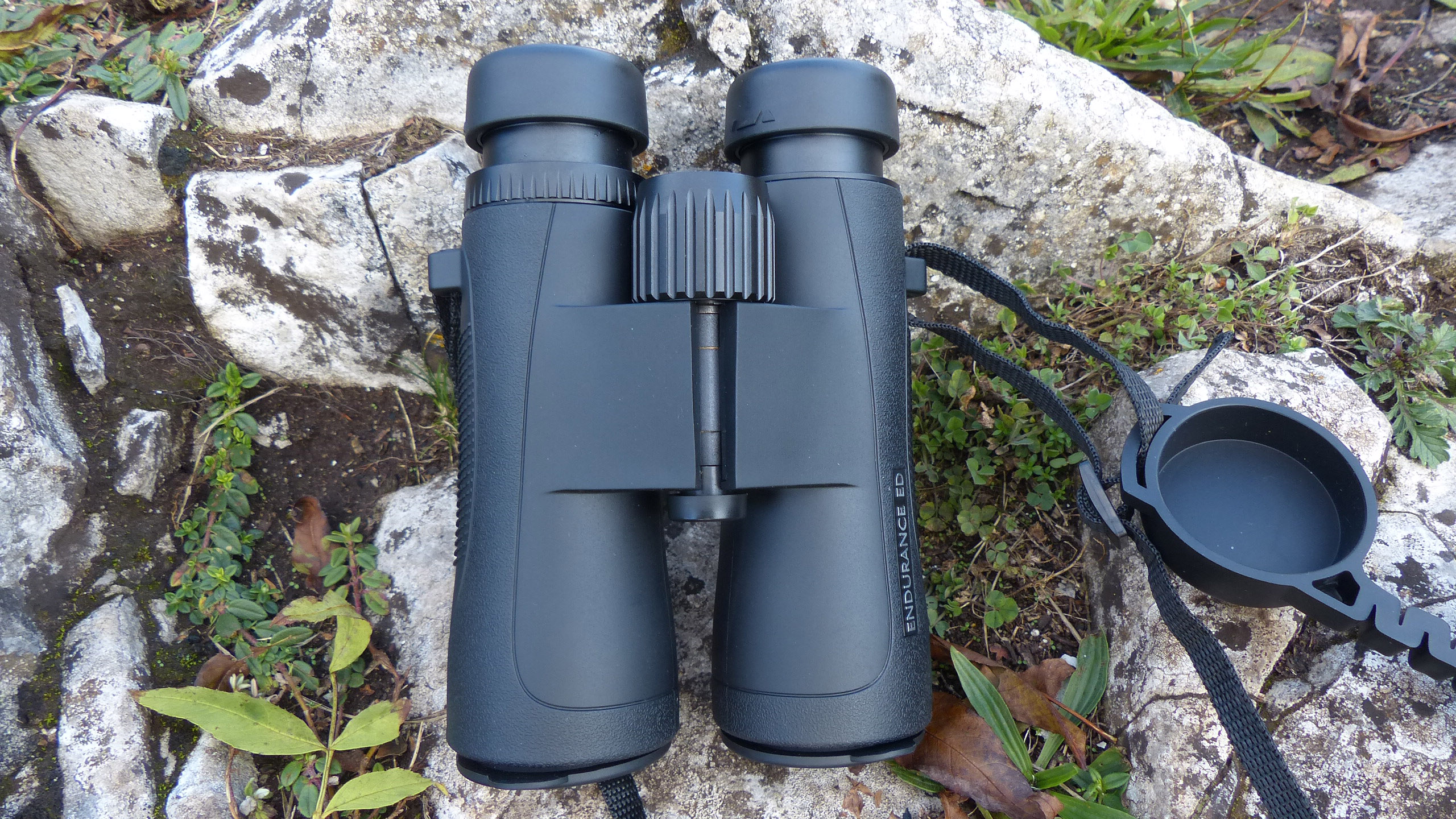
Specifications
Reasons to buy
Reasons to avoid
Testing these binoculars was a joy. Our tester spent one morning watching a juvenile kestrel on his local patch. Wide-angle views made it easy to track the bird as it practiced hunting in the scree. When it came to rest in a tree opposite, he could pick out the subtle shift in faun and chestnut browns and its blue-gray head and tail feathers, thanks to its crisp image and the natural colors that these binoculars produce.
If your aspirations tend towards serious bird and nature watching, then I would highly recommend you try these for yourself. They look and feel exceptionally good and the focus wheel, while a little firmer than others, adds to the feel of a well-constructed pair of binoculars that promise a lifetime of use.
Read our full Hawke Endurance 8x42 binoculars review
The best lightweight binoculars
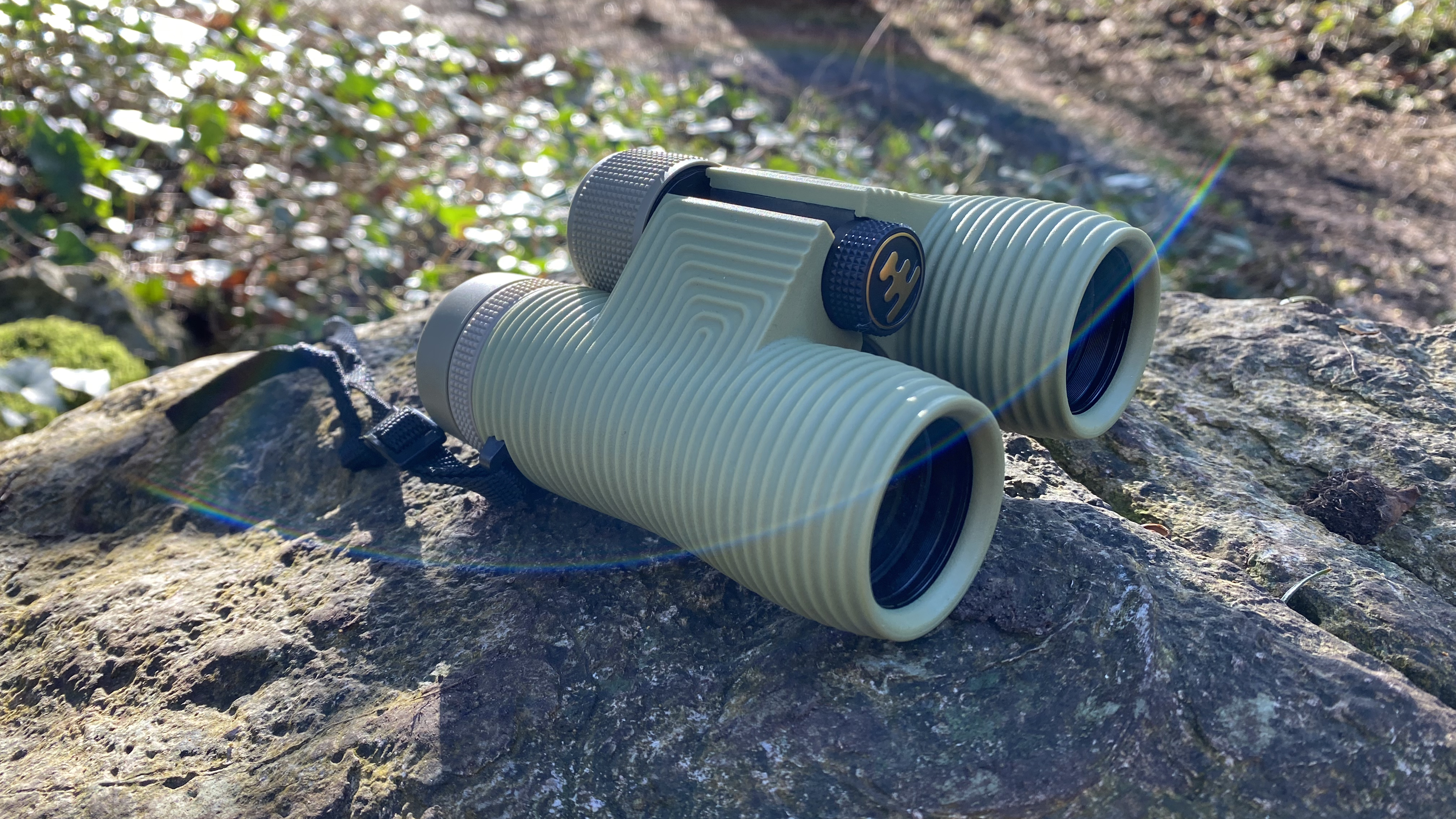
Specifications
Reasons to buy
Reasons to avoid
If you're looking for a good quality pair of waterproof binoculars at a mid-range price then the Noc Provisions Field Issues are a great option. The focusing wheel is well-sized, smooth to operate and impressively precise, making this pair easy to use in the field.
Bird watchers may well be looking for a lower magnification than on offer here and if you want a close focusing pair these also aren't the best choice. But what they provide is great clarity and contrast, in a compact design.
The lenses are fully multi-coated and are available both as 10x32 and 8x32 - our expert tester tried the 10x32 option. The ribbed barrels make them easy to hold and their 473g (16.7 oz) weight makes them easy to pop into your backpack, although you may want to invest in a carry case, as the bag they come in doesn't feel super-protective. These binoculars are also rated waterproof and fogproof, so you can be confident that a downpour on the trails won't see them off prematurely.
The best binoculars for serious birders
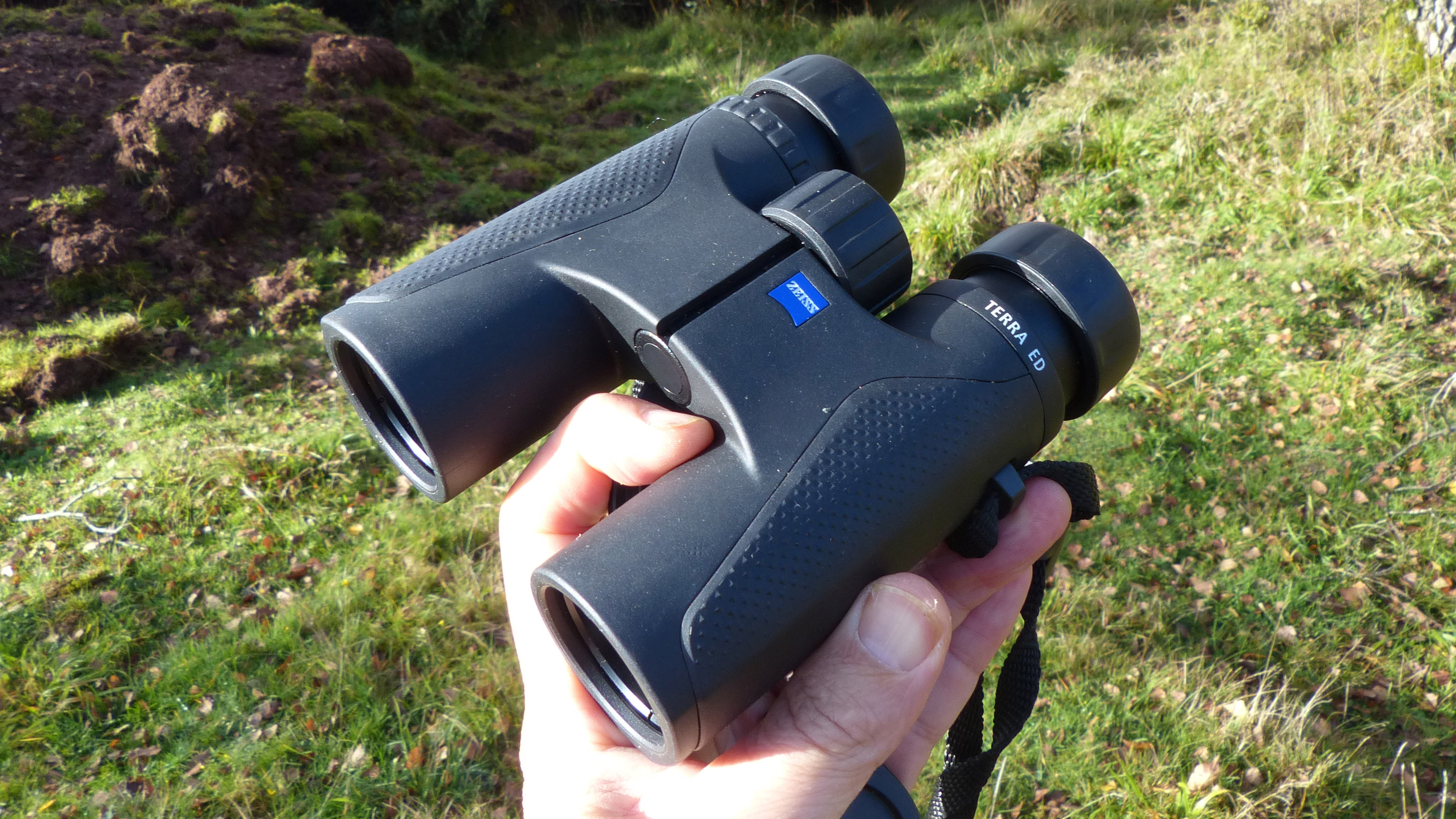
Specifications
Reasons to buy
Reasons to avoid
Of all the pairs in this test, these binoculars are mostly likely to get appreciative nods from other birders. They represent a significant step up in outlay, and casual users may not notice a great deal of difference from pairs like the Nikon or Hawke, but if your aspirations match this price point, then these (and the Kowa BDs) are where you should be looking. Small differences in performance will represent a good return on your investment over many years of use.
These felt really good to hold and the large focus wheel made it easy to adjust as we followed birds zipping across the sky. There’s very little sense of distortion at the edge of the image and you get bright, natural colors that allow you to really appreciate the action. We tested these in a range of conditions and while they are undoubtedly impressive, they did not quite deliver the brightness of image that we expected in lower light conditions.
Read our full Zeiss Terra ED 8x32 review
The best binoculars for stargazing
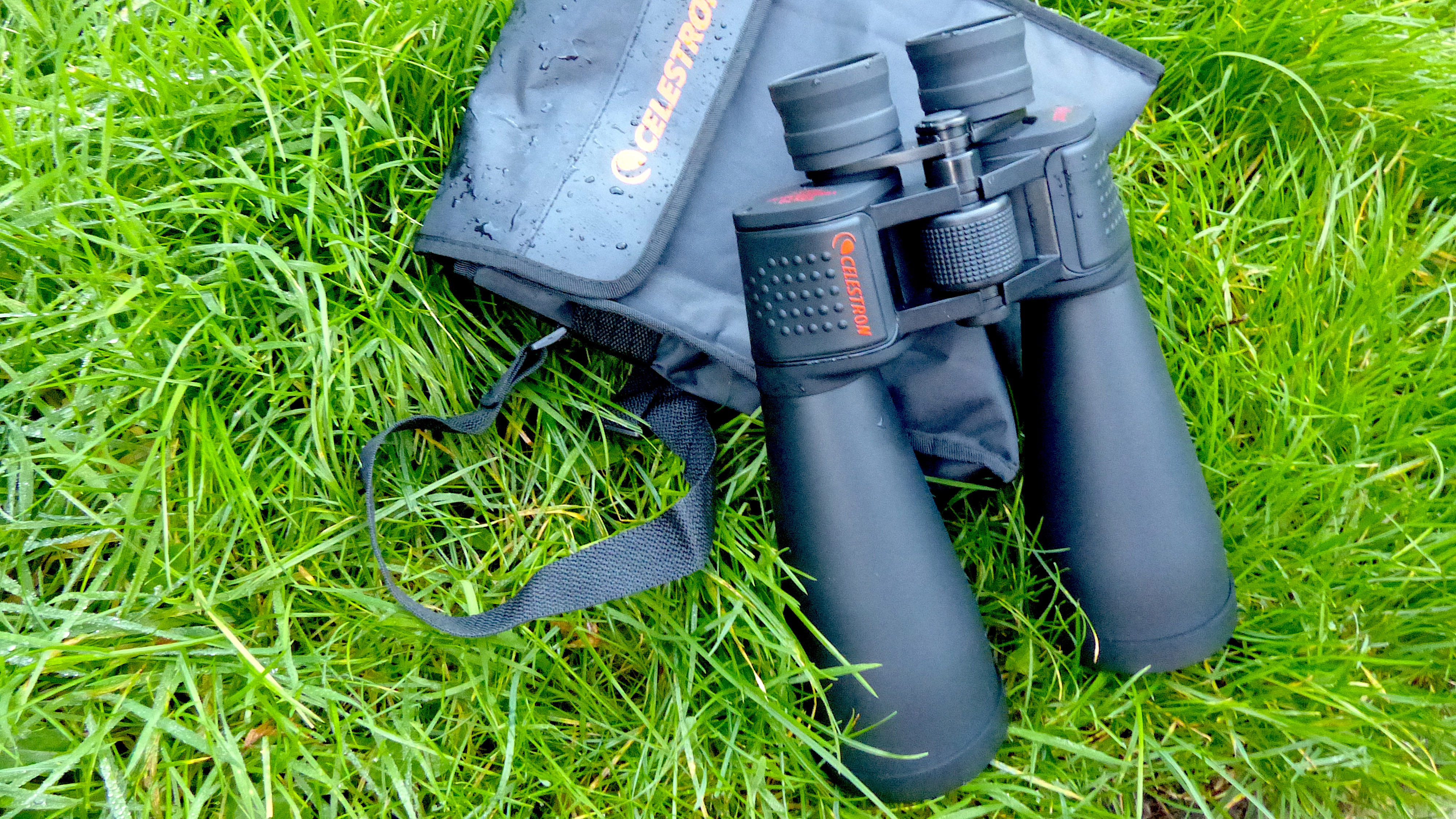
Specifications
Reasons to buy
Reasons to avoid
These binoculars wouldn’t look out of place on the set of a WW2 naval epic, being used by a lookout scanning the ocean for U-boats. The whopping 70mm objective lens is designed to gather light, while the 15 times magnification promises impressive views of the lunar surface, Jupiter, cloud nebula and even a hint of the rings of Saturn. When we pointed them into a seemingly clear section of sky, stars started to appear that weren't visible with to naked eye.
At this price point a pair of binoculars are probably a better bet than a telescope. We found that they gathered more light and, because we were using both our peepers, we got a more 3D view. Hand-held, it's a struggle to prevent image wobble, so we had to either balance our elbows on a wall or use the tripod adaptor to get the stability required. But at this price, we think everyone should have a pair of these: they are guaranteed to enhance your enjoyment and understanding of the night sky.
Read our full Celestron Skymaster 15x70 binoculars review
The best binoculars for value
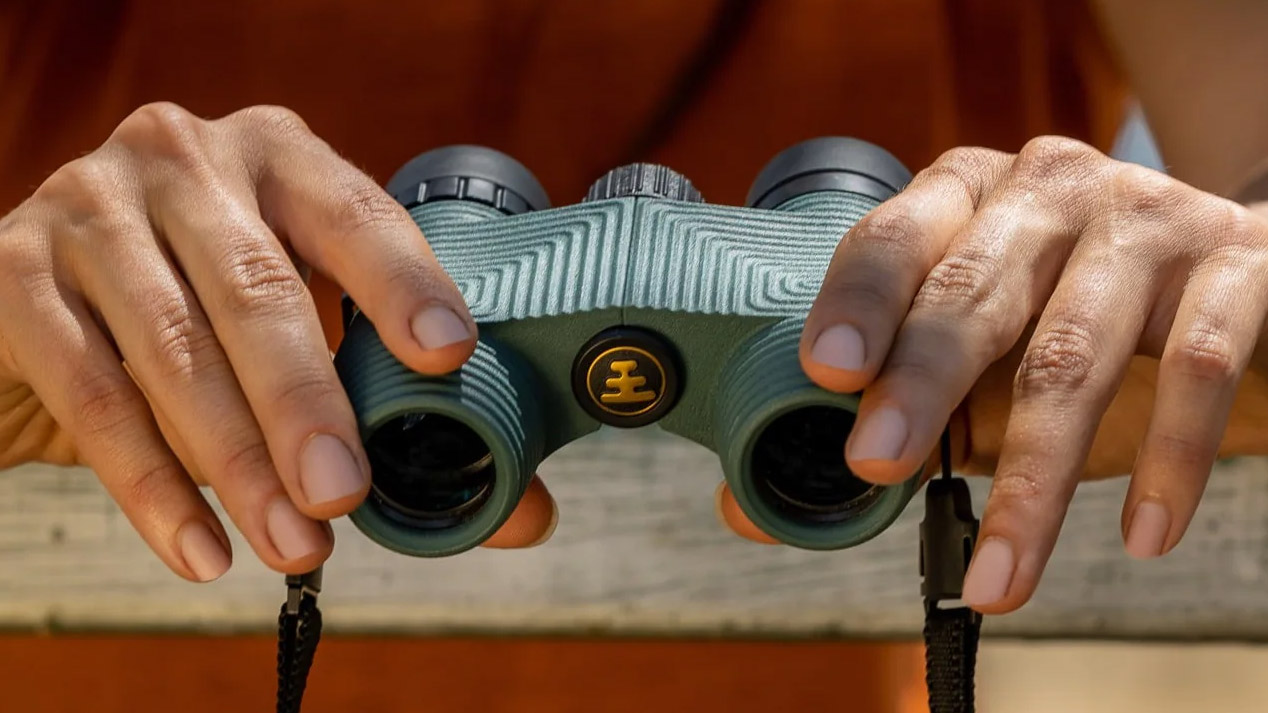
5. Nocs Standard Issue
Our expert review:
Specifications
Reasons to buy
Reasons to avoid
The quirky looking Nocs Standard Issue Collection Binoculars are a great choice for buyers looking for a pair of adventure-ready, high-performing binoculars without breaking the bank.
The Nocs binoculars use high-grade Bak4 prisms and fully multi-coated lenses that together provide a wide field of view and outstanding image quality in all light conditions. They’re also fully waterproof, have fog-proof lenses, feature a non-slip ergonomic grip and we found that they are as ruggedly built as any other model in this guide.
The Nocs weigh in at a highly portable 11.85oz (336 g) and are small enough to fit inside a large pocket or the hood of a daypack. Their manufacturers also protect your purchase with a highly reassuring 'no matter what' lifetime warranty and throw in a smartphone adapter that lets you capture photos and video clips through the lenses. The binoculars come in a variety of wild and vibrant colors: marigold yellow, cobalt blue, poppy orange, granite gray, seafoam green, cypress, flat earth and squid ink.
The best binoculars for kids
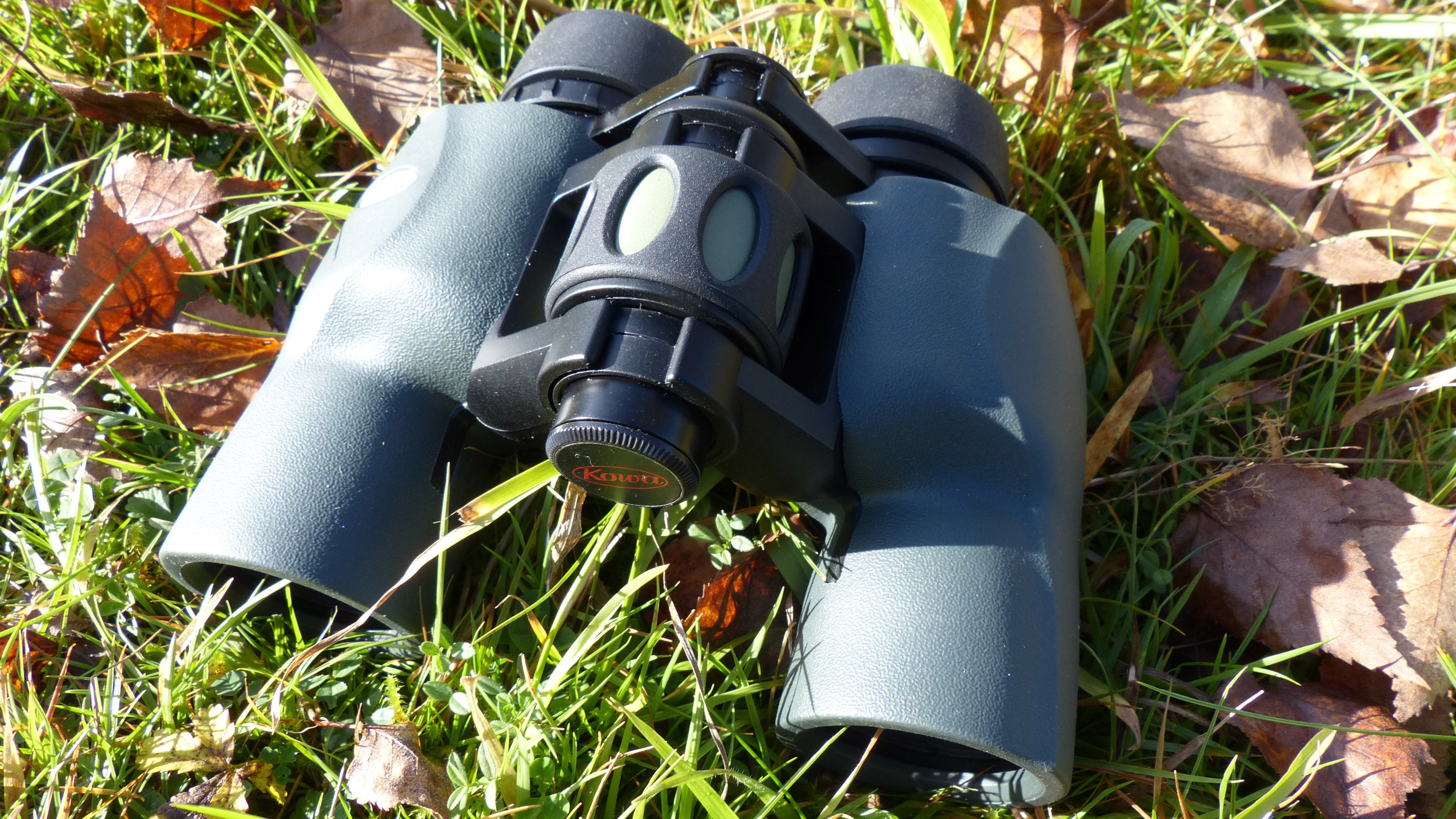
Specifications
Reasons to buy
Reasons to avoid
These are porro prism binoculars (see ‘how to buy section’ below) and while they might look slightly old fashioned, there are some distinct advantages. Because light takes a simpler route from the objective lens to your eyeball, there is less technology required inside to deliver the same image quality. That means you potentially get the same performance as a pair that cost far more.
We found that these Kowa YFs are really impressive. They deliver a bright, sharp image with good color and very little sense of fuzziness at the edge. The field of view is wide enough for them to work as a primary pair of bird-watching binoculars and they offer excellent close focus. They are great for smaller hands, and perfect for young birders who want their first pair of bins. If you’re buying on a budget, these are robust, light, easy to pack, sit neatly in a waterproof jacket pocket and are ready for action when you need them. So not just for kids and beginners, these are among the best binoculars for anyone at this price point.
Read our full Kowa YF 8x30 binoculars review
The best binoculars for campers
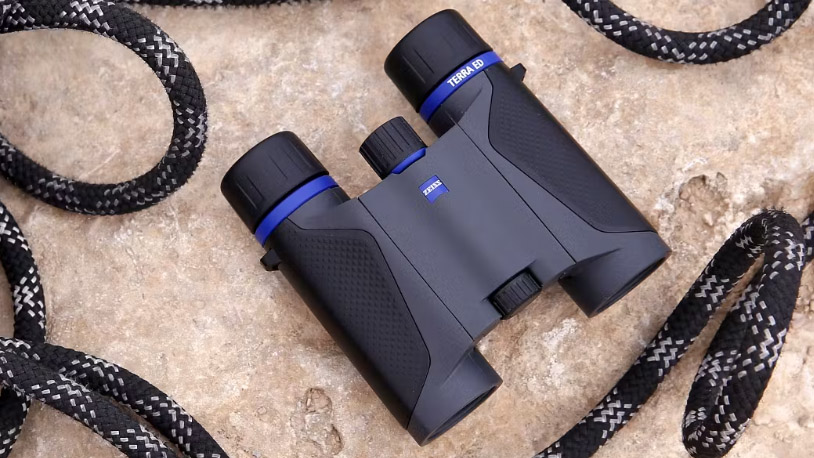
7. Zeiss Terra ED Pocket
Specifications
Reasons to buy
Reasons to avoid
Across a broad product range, Zeiss offers models of binoculars for every application and budget. For hikers and campers, the Terra ED Pocket 8x25 is our pick of the bunch. These binoculars offer 8x magnification and use high-quality hydrophobic, anti-reflective coated lenses that provide clear, crisp, and colorful images in all light conditions. The large viewing fields and close minimum focus distance make these just about the closest thing you’ll get to a full-sized binoculars in a trail-ready and pocket-sized format.
The lightweight, compact, folding design makes these binoculars easy to bring along on any outdoor adventures and to sports events, while the quality of the optics means they are also a great choice for dedicated bird-watching trips. Overall, they have very user-friendly ergonomics, with grippy covering armor and an intuitively located diopter knob making handling and focusing a cinch.
The best binoculars for hikers
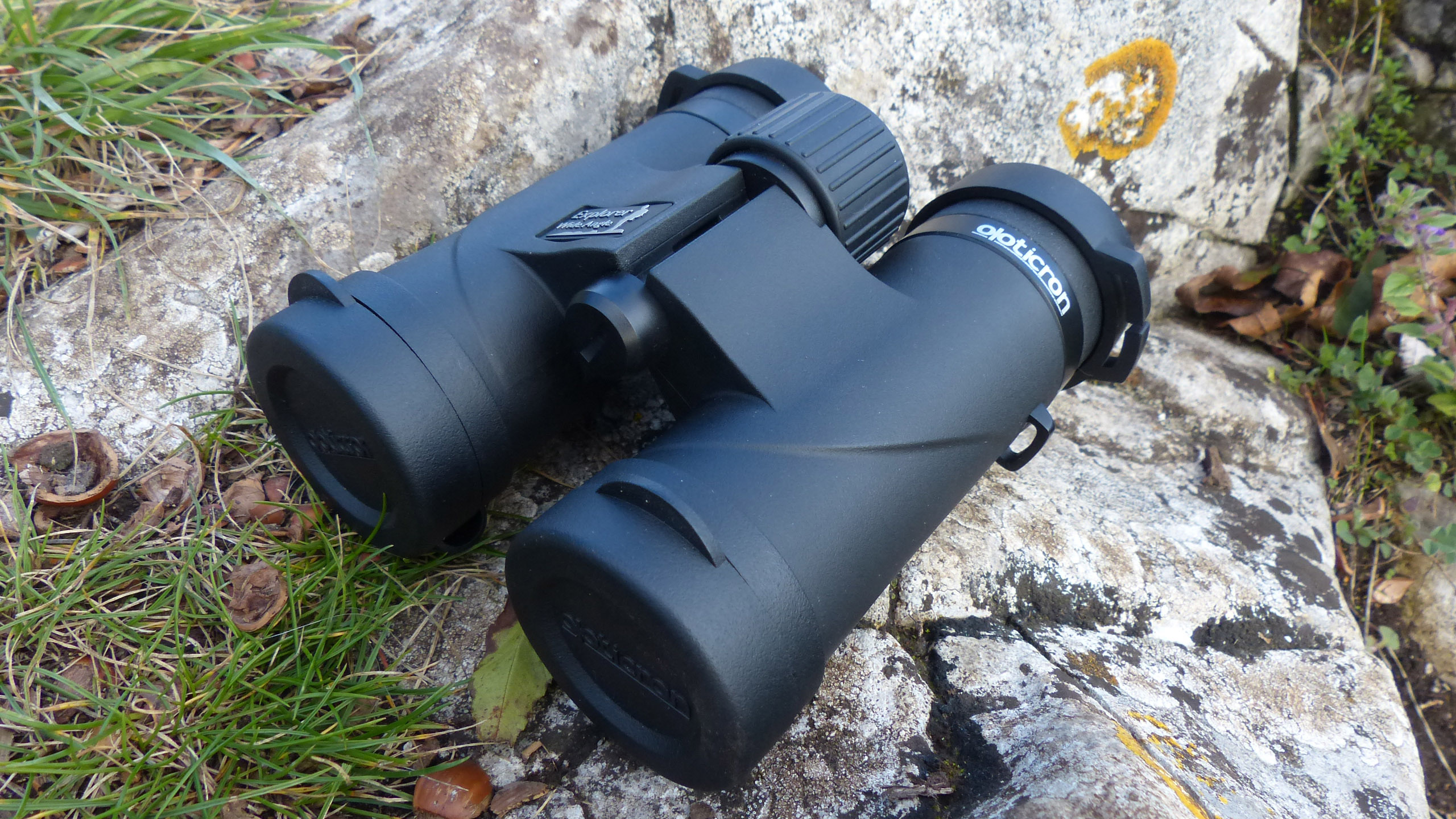
Specifications
Reasons to buy
Reasons to avoid
We found that these binoculars are perfect for long bike rides, walks or multi-day trips. They're light, compact and easy to justify throwing in a rucksack or bike pannier just in case.
Smaller objective lenses should mean they don’t perform as well in lower light conditions, but we were very impressed when we tested these alongside three larger lens binoculars. As the sun was going down, watching a climber tackle routes in the Avon Gorge, the Opticrons produced clear, bright images good focus across the color range.
With the widest field of view in this test they make it easier to track a bird in flight or to spot interesting behaviour in a larger flock. They compare favourably with the most expensive models in this test and these were the pair we kept coming back to during the test.
Read our full Opticron Explorer WA ED-R + 8x32 binoculars review
The best binoculars for durability

Specifications
Reasons to buy
Reasons to avoid
Every pair of binoculars in this test represent great value and performance and these are no exception. The image quality is good and they would meet the needs of most users, so if you are looking for a pair of binoculars at this price point then these are an excellent investment. What’s more, they are designed to be impressively robust. Bushnell is a US brand that specialises in sports optics for hunting, fishing and wildlife watching.
These come with a hydrophobic coating to deal with dust, oil and water and a lifetime ‘ironclad’ guarantee. You can apparently immerse them in three foot of water for up to 30 minutes. We found that they are indeed tough, but didn’t have the quality feel of other binoculars and the eyecups didn’t twist as easily as we would have liked. But if you’re looking for the guarantee of bomb-proof performance and great value for money then these should be on your shortlist.
Read our full Bushnell Prime 8x42 binoculars review
The best monocular

Specifications
Reasons to buy
Reasons to avoid
Our expert reviewer loved how easy it was to use this monocular. The smooth, effective focusing mechanism and well-specced lens and magnification mean you can pick out the details on what you're looking at beautifully, and the light weight makes it less likely that you'll get any shake.
You don't get a neck lanyard with this design, but there's a wrist lanyard and lens caps included in the price, which is also very wallet-friendly. One of the lens caps isn't attached, so you'll need to take not to lose it - in our experience lens caps are a bit like socks. They can disappear mysteriously when you're not looking!
Tipping the scales at just 352g, about the same as a can of Coke, you're not going to feel weighed down by this monocular, and it's compact size makes it easy to squeeze into any pack. The 8X magnification isn't super powerful, but the advantage of a shorter lens is that it's easier to home in on what you want to see.
Overall, this is a great first purchase if you're keen to get up close with nature, and the simple controls make it easy to use for beginners too.
The best lightweight monocular
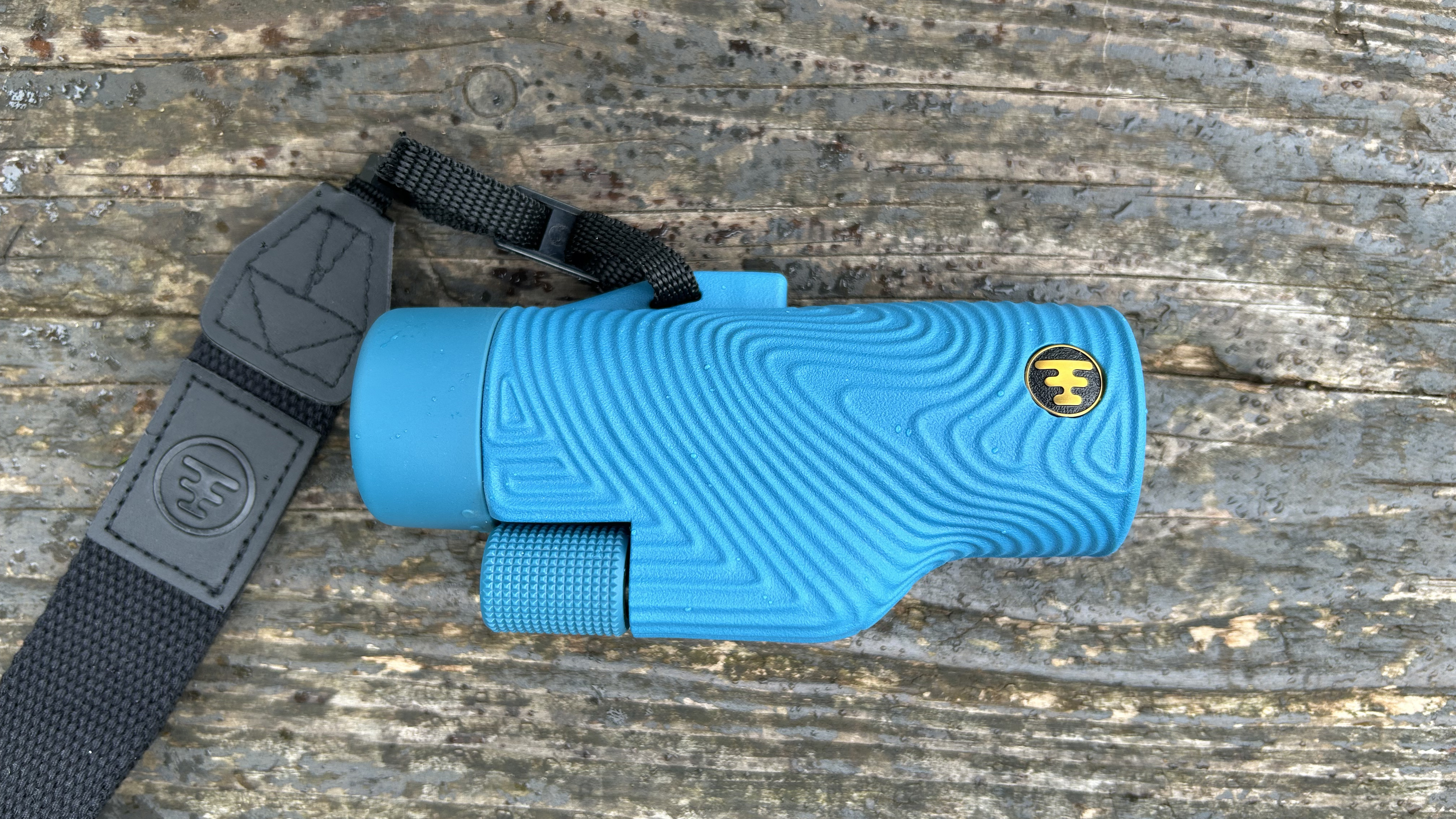
Specifications
Reasons to buy
Reasons to avoid
Now here's a neat bit of kit that will help you get the most out of your backcountry nature walks. If you're time-strapped, enjoy fast hikes and getting out in the rough, or just don't like to be weighed down, the Nocs Provisions Field Tube 8x32 will enhance your adventures with minimum maintenance.
It is half the weight of a pair of binoculars, and the compact shape is handy for slipping in and out of pockets. A ridged exterior gives great grip, and the waterproof and fog proof design means you won't have to seek shelter from the rain, or stop to worry over a misted-up lens.
Of course, where you gain in weight and usability, you lose in field of vision and close focus. But, better to catch those chance encounters on the go than not at all. And our expert hiker and wildlife watcher still rated the monocular for its multi-coated lenses and anti-reflective qualities, which gave a clear image that was easy to focus using the oversized wheel.
In fact, he was totally impressed with the Field Tube 8x32, which delivered on low-key wildlife watching during outdoor pursuits.
Read our full Nocs Provisions Field Tube 8x32 review
The best for video
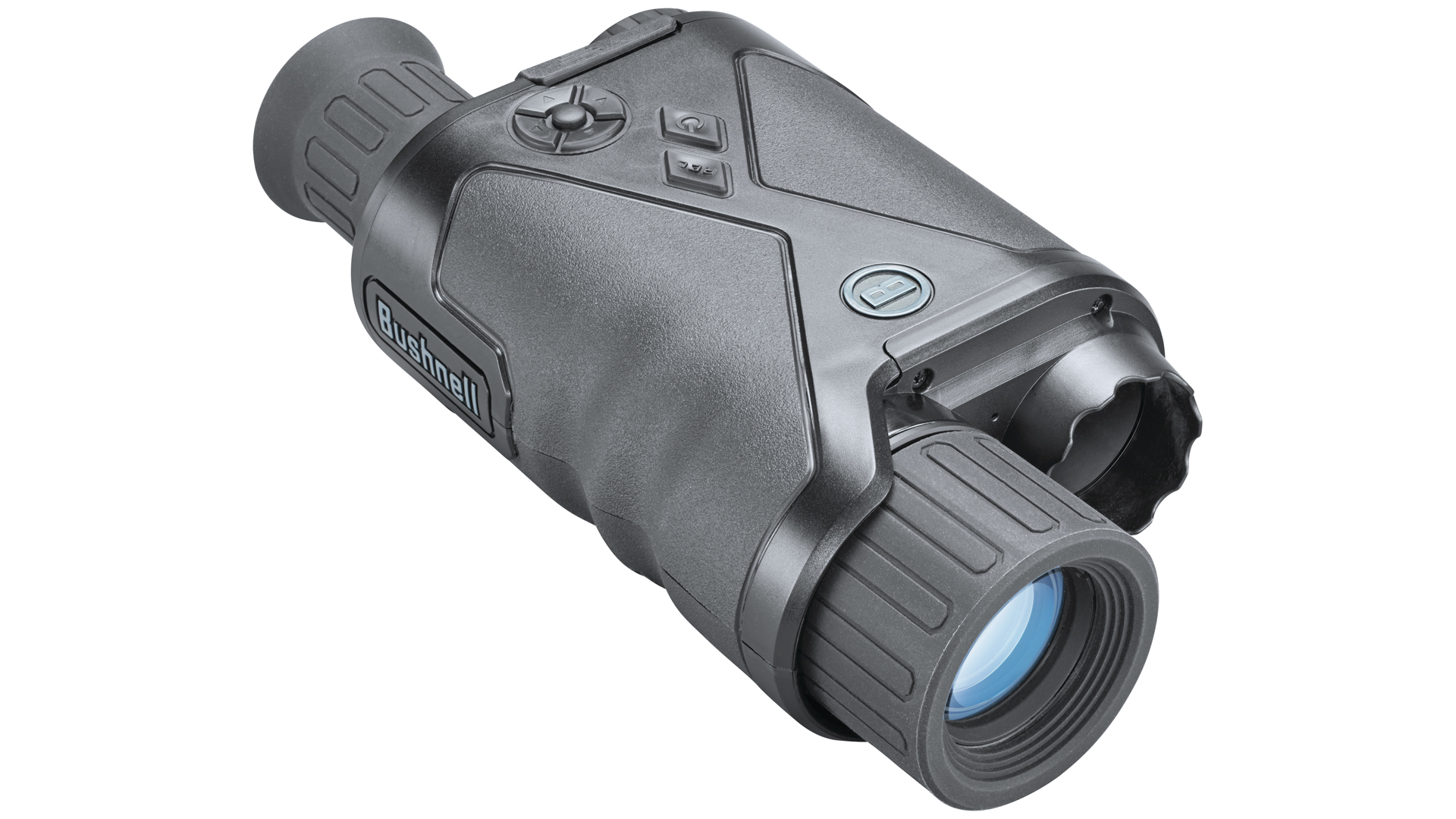
12. Bushnell Equinox Z2 3x30
Specifications
Reasons to buy
Reasons to avoid
This is relatively expensive and are clearly designed for a very different purpose to others in this test. Whether your adventures take you out on wild camping trips or you want to know what’s roaming around at night in your back garden or local patch, these are worth consideration. It doesn't have the magnification of others in this test, but this monocular uses infrared sensors to deliver an effective night vision range of up to 200 yards (182 meters). What’s more, you can capture the action, as the Z2 allows you to record video at 1080p HD and then upload images and videos using Wi-Fi or leads.
Film during the day to deliver color images on the screen, which switches to black and white at night for sharper clarity and contrast. We found it to be a fun option that could have serious applications for those with an interest in nocturnal wildlife.
How we test the best binoculars
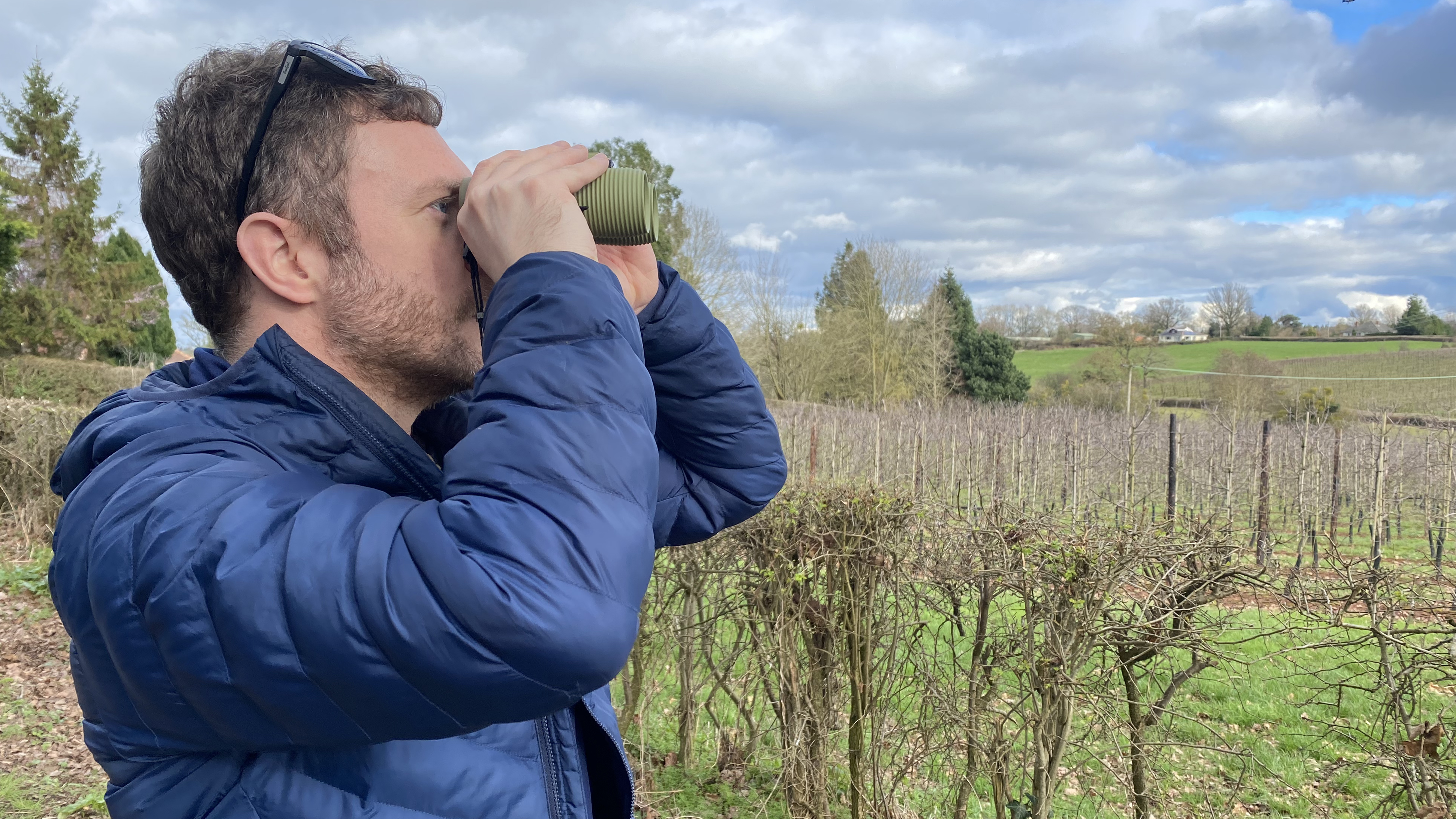
At Advnture, we test binoculars in the backcountry and in the conditons they were designed to be used in. We assess their performance against their specifications, paying close attention to qualities like clarity, ease of use, portability, grip and weight. When arriving at the final rating, we consider the user experience against the value of the product.
Meet the testers
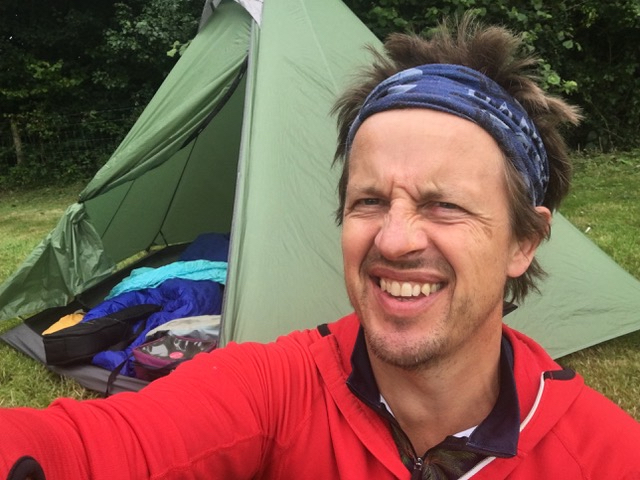
With a passion for butterflies, adventure and all things wildlife, Matt is the former Editorial Development Director for Lonely Planet, editor of Trail and BBC Wildlife magazine. His adventures have taken him across the world, from the Cuillin of Skye to volcanoes in Central America.
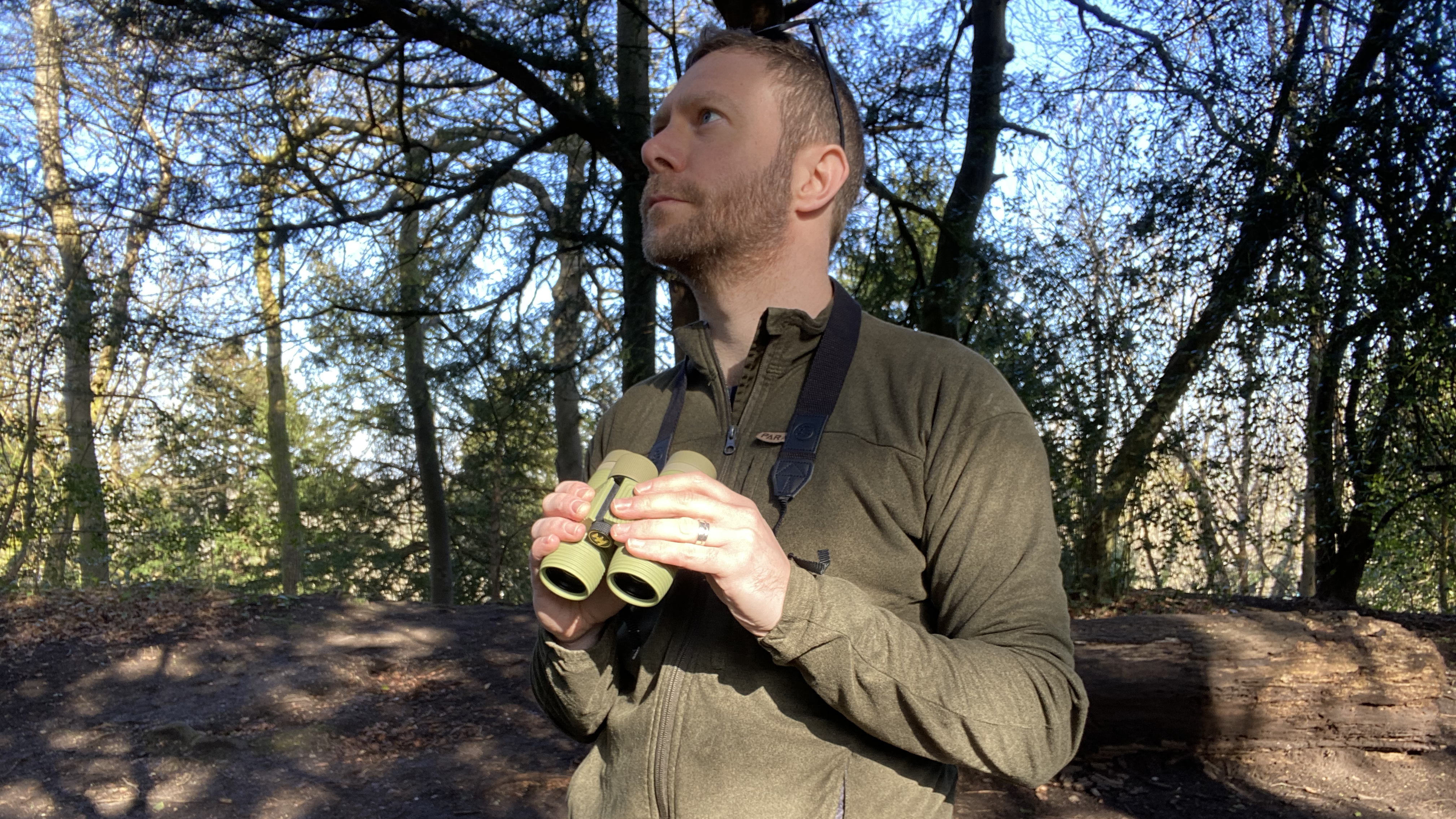
As a lover of the outdoors, Alex enjoys nature watching. He grew up on the Solway Firth, an estuary between England and Scotland and an important site for native and migrating birdlife. Here, he caught the wildlife watching bug from his father. As well as using binoculars during his upland rambles, he’s also something of an amateur astronomer and enjoys focussing in on the wonders of the night sky.

Julia is our resident senior staff writer and an expert on outdoor kit. She's spent her life exploring the wildlife of the Rockies and the Scottish Highlands and has a keen eye for nature.
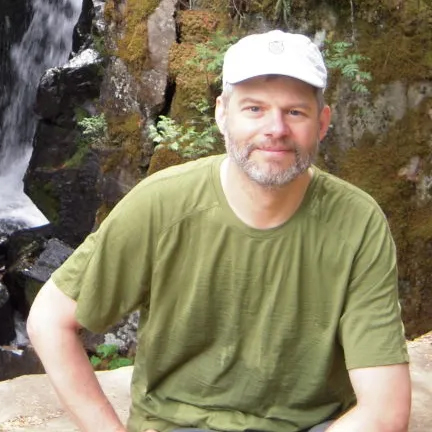
A journalist specializing in outdoor recreation, Louis is a published author, his book about invasive fish threatening the Great Lakes watershed was published in 2021. His love of wildlife and the great outdoors knows no bounds and he knows a good pair of bins when he looks through them.
How to choose the best binoculars
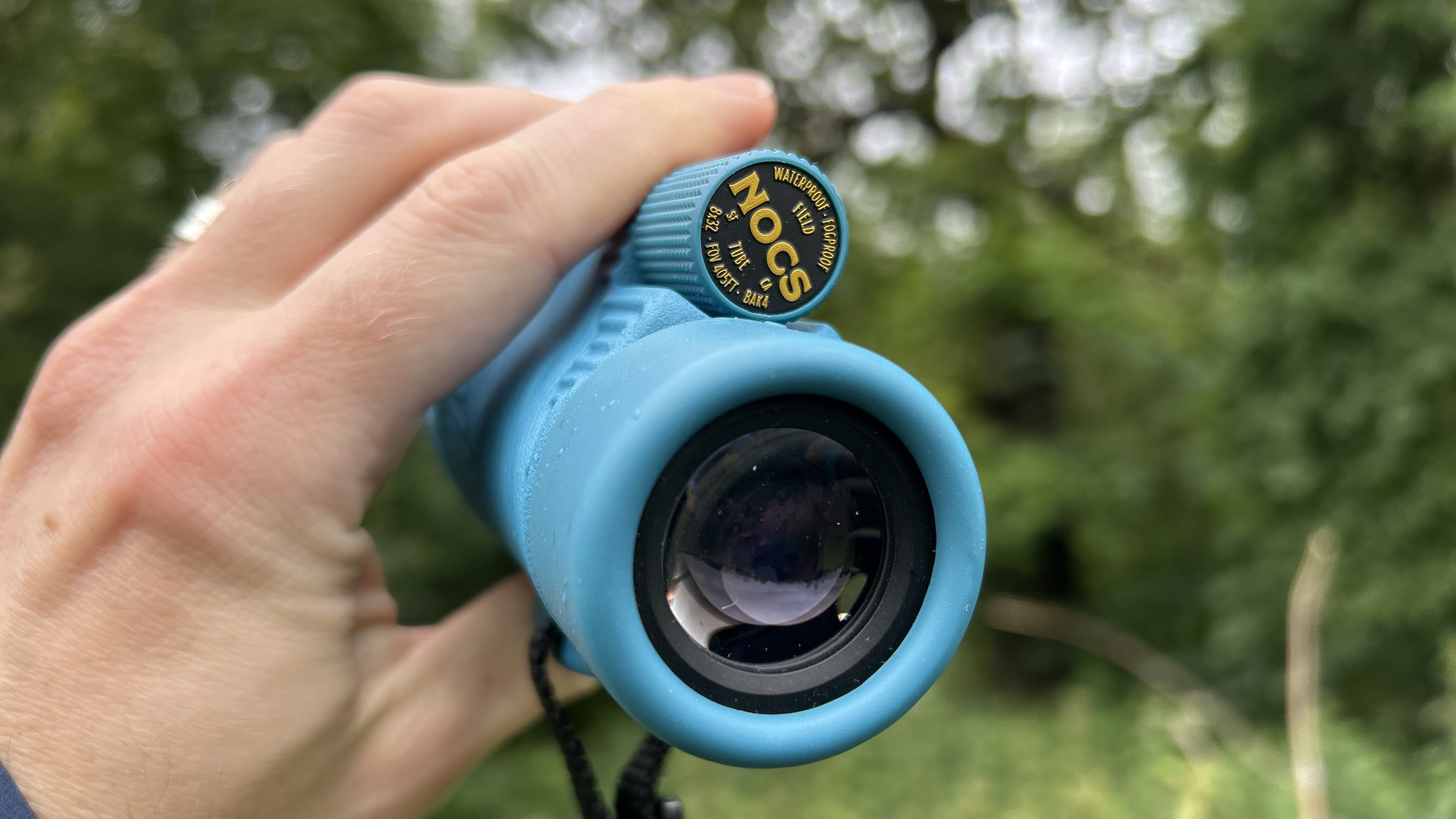
Binoculars are an exceptionally personal purchase. What feels right for one person may not work for another. What delivers a good image for one person may not work quite as well for you. So there is no substitute for getting your hands on a pair of binoculars before you buy.
To help you narrow down your choice there are two questions to ask yourself when looking for the best binoculars: what is your budget and what do you want to use your binoculars for?
There are many reasons you might need binoculars. If you're off on a once-in-a-lifetime safari trip, you might want to splash the cash on an all singing, all dancing model that provides great magnification and crystal clear vision. However, if you're looking for an additional boon to your hiking essentials, you'll want something light and compact, a model that you don't mind stuffing into your daypack. Often overlooked for this kind of application are monoculars. When it comes to binoculars vs monoculars, the latter are smaller, cheaper and lighter than their dual optic counterparts.
Read on for more answers to all your binocular buying questions...
Consider the magnification you require
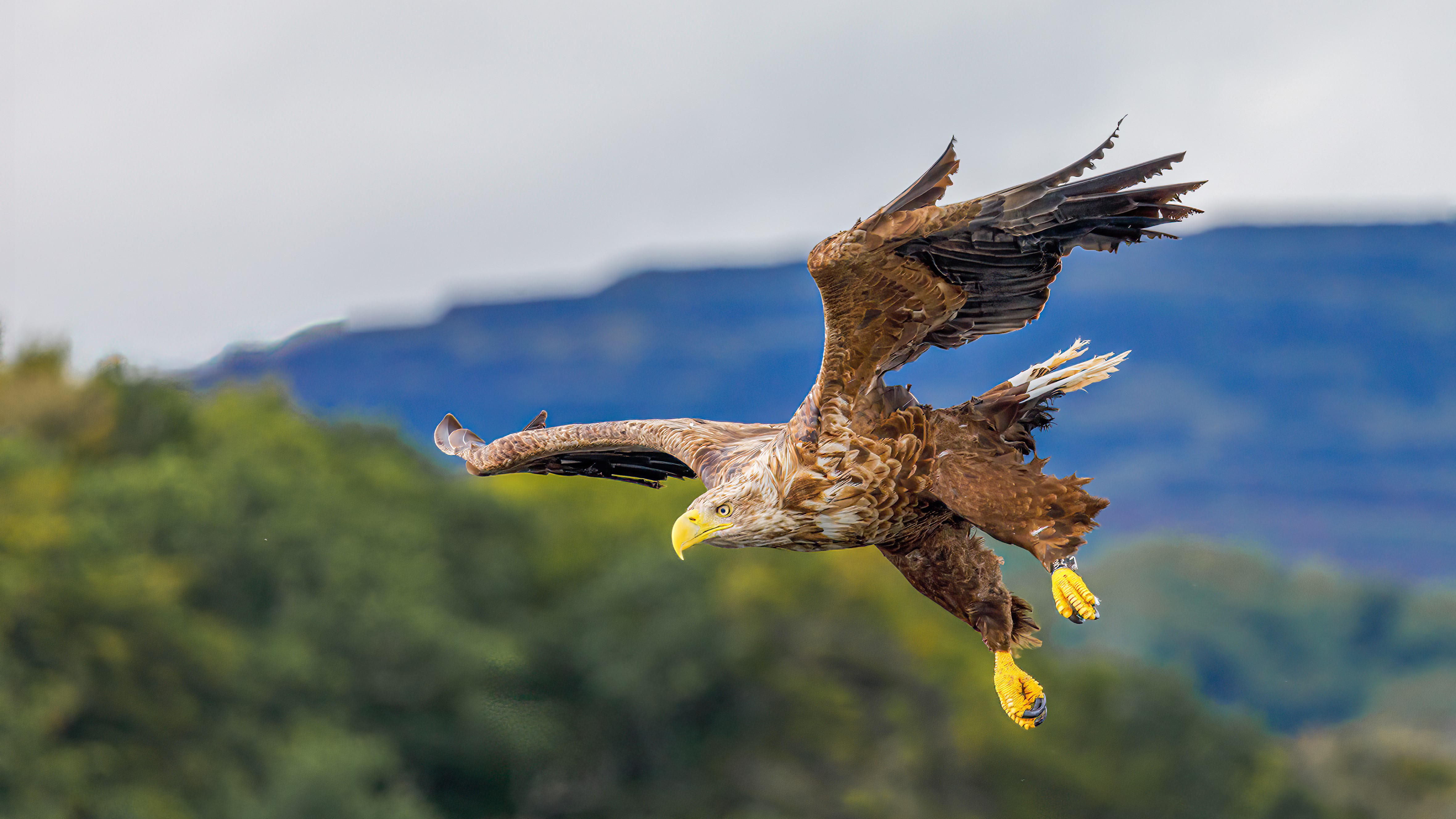
The best magnification for binoculars will depend on what you intend to watch, how far away it is and whether or not it will be moving. The magnification of a pair is indicated in the first number in the name, typically 8 or 10 on a standard paid.
Nature watching: We think that the sweet spot for most nature watching is a pair of 8x42 binoculars. Larger magnification can make it harder to deliver a stable image with a pair of handheld binoculars. A x10 magnification is probably fine for most people, but don’t go over this unless you intend to use them with a tripod.
Bird watching: We think that a pair of binoculars around the 8x32, 8x42 mark are ideal, although a pair of 10x32 or 10x42 are also worth considering.
When it comes to which is better, 10x42 or 20x50, the latter are excellent for longer ranges, making distant objects look much closer than they are and great for looking at far away objects that aren't moving. However, the greater magnification equals a narrower field of vision, which makes finding and keeping your focus on moving objects more difficult.
With this in mind, a binocular with an 8 or 10 factor magnification is useful to catch the action in flocks of birds or to find and then track fast moving species. Binoculars that deliver natural colors will help if you need to ID tricky species. If you have an interest in butterflies, bees and dragonflies, then look for a pair that offer a close focus of 2m or less.
Stargazing: For admiring the moon and celestial objects, you'll want even greater magnificant. The Celestron Skymaster provides x15 magnification for this very purpose.
Choosing between roof or porro prism binoculars

There are two types of binoculars in this test: the traditional porro prism binoculars that have an ‘M’ shape to them, and the more modern roof prism binoculars that seem to be just a tube where the light travels directly from one end to the other.
The truth is very different: roof prism binoculars require high quality prisms and lenses to send the light on a much more complicated path from the objective lens to the eye.
So while these more fashionable binoculars are often more compact and sleeker in design, the porro prism alternatives should not be overlooked. Less technology inside and a less complicated path for the light to follow, means they offer better image quality and brightness for your money.
Getting the right size

Our best binoculars guide features a range of sizes and weights. Choosing the optimum pair for your adventures will really depend on how serious your wildlife watching exploits will be or whether carrying a pair of bins is simply a 'nice to have'. If it's the latter, look for lighter, more compact pairs that won't weigh down your pack or take up much room.
How much to spend
You can expect to pay anything from $100 to $400 for a pair of quality binoculars, with the lower end representing good budget options and the upper end being the more premium pairs. Of course, you can spend less than this, though the quality is likely to suffer. Likewise, you can also spend more but the difference in performance starts to become negligible compared to the increase in price.
If you're a glasses wearer
Some people will need to wear glasses while they use their binoculars. If you’re near-sighted and require glasses for reading this will be less of a problem.
Eye relief is the distance a binocular can be held away from the eye while still giving you the full field of view. If you use glasses then you need to look for a pair that have an eye relief of 16mm or more. Test them out with your glasses on if possible.
FAQs about binoculars
What do the numbers mean on a pair of binoculars?

Magnification: The first number which, on mainstream binoculars, is often either 8 or 10, is the magnification. The higher the number, the greater the magnification. For example, if an osprey was soaring through the sky 100 meters away, viewing it through 10x magnification would make it appear only 10 meters away.
Objective lens diameter: The second number, is the objective lens diameter in millimeters. The larger the objective lens, the more light your binoculars can hoover up. Not only this, the difference is exponential. So, if you were to double the diameter of your objective lens, it’ll collect four times as much light.
So, a pair of binoculars labelled 8x32 features x8 magnification and a 32mm objective lens.
What is field of view?

The field of view is the width of the image you'll see when you look through a pair of binoculars. It's usually stated as the distance in meters horizontally visible when looking at objects 1,000m away. As a general principle, the wider the field of view the better, as it allows you to track moving objects more easily. This is especially important when bird watching, as those raptors don't hang around when in flight!
What are the best binocular brands?

When it comes to the price points featured in this guide, we think Kowa, Zeiss, Nikon and Celestron make the best binoculars for hiking and wildlife watching trips. Kowa are a Japanese brand that boast supreme optical excellence, while Zeiss have all the hallmarks of quality German manufacturing. Meanwhile, we love Celestron's SkyMaster 15x70s for a spot of stargazing. Nikon are a popular brand and a very good shout if you're looking for exceptional value.
What is an objective lens?

Objective lenses are the front lenses in a pair of binoculars. The diameter of a pair's objective lenses and its magnification are the numbers you often see in the name. So, a 8x42 binocular has a magnification factor of 8 and an objective lens diameter of 42mm.
While the magnification determines how large objects will appear, the diameter of the objective lens determines how much light the instrument can gather and the difference is exponential. For example, if you double the size of the lens, you get four times the light gathering capability. So, for low light applications, the larger the objective lens, the better. It makes sense when you start to think about astronomical telescopes, which have huge objective lenses for looking into the night sky. However, if you're on a sunny safari, too much light may not be such a good thing...
What does 'brightness' mean in binoculars?

Not all things are equal, which is why manufacturers will shout about the technology inside their binoculars that allow them to bounce light around to deliver a brighter, sharper image. Many manufacturers offer a number for ‘relative brightness’ but this is really just based on the size of the objective lens. In reality, the quality of glass and manufacturing as well as the technology used will deliver very different results. If you're looking to take in the wonders of the Northern Hemisphere night sky, you'll need a large objective lens and high magnification.
Should I worry about a lifetime guarantee for binoculars?
Smaller binoculars are easier to slip into a jacket pocket and carry on longer multi-day trips. If you are doing something more adventurous than carrying your binoculars from a car to a bird hide, then they need to be robust and durable. A lifetime or long guarantee is a good indication of the manufacturer’s faith in their product. We have had binoculars replaced in the past, so it’s worth looking for this extra security.
Do binoculars need to be waterproof or rain resistant?

Even general bird watchers need to know that their binoculars can cope with rain and wet weather. A solid construction and anti-fogging is important. If you’re planning long walks in rainy conditions, then a quality carry case and lens protectors are helpful. Even better, stash your bins in a decent dry bag for peace of mind.
All the latest inspiration, tips and guides to help you plan your next Advnture!
Former Editorial Development Director for Lonely Planet, editor of Trail and BBC Wildlife magazine, and editor-in-chief of Trail Running magazine, Matt got the outdoor bug as a teen on gruelling UK Ten Tors events around Dartmoor. He has hitch-hiked to Egypt, cycled through India, enjoyed the delights of the High Atlas, slept on volcanoes while living in Central America, climbed in the Alps and tackled some of Scotland’s really big routes, from Tower Ridge and the Cuillin to the Aonach Eagach. He’s got a passion for butterflies and ukuleles. If you see him in a campfire situation… approach with caution.
